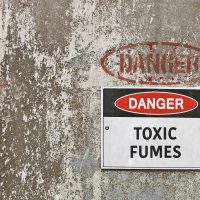Building a Strong Defense: Legal Strategies for Lead Paint Claims in New York

Lead paint litigation remains a significant challenge for landlords and property managers in New York City. With stringent one-sided city laws such as Local Law 1 of 2004 and subsequent amendments imposing substantial duties on landlords and managers, defending against lead paint claims requires a cost-effective strategy that addresses regulatory compliance, evidentiary issues, the likelihood of potential liability, and proactive settlement negotiations. A cost-effective defense mitigates catastrophic financial risk from seven-figure jury verdicts that are common in lead paint cases in New York City, where juries are comprised largely of tenants who will predictably side with the infant plaintiff against landlords, and the elected judges are legally charged with resolving cases in the best interests of the child. Traditional toxic tort litigation leading to a jury trial of a lead paint case, which can take years in City courts, is not only very expensive in legal costs but also a poor choice for the lowest cost resolution.
Below, we explore some key points when it comes to landlord and property manager liability and defending against lead paint claims in New York City. For individualized legal advice custom-tailored to your particular situation, contact the Law Offices of Richard A. Fogel, P.C., to discuss your circumstances with a skilled and experienced New York lead paint defense lawyer.
Understanding the Legal Landscape
Local Law 1 presumes that paint in buildings constructed before 1960 contains lead unless tested and proven otherwise. Landlords must take proactive measures, including annual inspections, remediation of peeling or deteriorated paint, and specific obligations upon apartment turnover. Recent amendments, such as Local Laws 31, 111, 122, and 123, have added requirements for X-Ray Fluorescence (XRF) testing and proactive remediation of friction surfaces. Violations can lead to significant penalties and create a basis for tenant claims.
Demonstrating Compliance as a Defense and for Settlement Leverage
One of the cost-effective strategies available to landlords is evidence of compliance with all statutory and regulatory obligations. Maintaining detailed records of annual inspections, notices to tenants, remediation efforts, and clearance testing is not only required by law but also can demonstrate good faith efforts to protect tenants and comply with the law. The stronger the evidence, the more settlement leverage the defendant possesses.
Challenging Causation and Medical Evidence
The defendant can challenge the causal connection between the alleged lead exposure and the tenant’s medical condition. Elevated blood lead levels can result from multiple sources, including other locations where the child visits, contaminated soil, water pipes, or imported products (general causation). In addition, the claimed physical damage from elevated blood lead levels (specific causation) is often speculative, exaggerated and not supported by admissible evidence and often derived from toxic studies involving adults with extraordinarily high levels of blood lead resulting from chronic lead exposure from working in the lead manufacturing industry. The defense can retain experts such as toxicologists, pediatric psychologists and pediatric neurologists to scrutinize the accuracy of claimed damages, the timeline of exposure, and the existence of alternative sources of lead.
Examining Notice and Tenant Conduct
Landlords may also defend claims by showing that they were not provided with adequate notice of peeling paint or hazardous conditions. If a tenant failed to report issues promptly or if they contributed to unsafe conditions through their conduct, these factors can influence liability.
Insurance and Risk Management Considerations
Insurance coverage for lead paint claims is frequently excluded from standard landlord liability policies. However, some policies may provide limited coverage, and others may be negotiated to include lead paint endorsements. As part of a defense strategy, landlords should work closely with coverage counsel to assess available insurance and advocate for defense and indemnity where possible. Proactive risk management, including tenant education and routine inspections, can further reduce exposure.
Practical Resolution
In most lead paint cases, the most cost-effective resolution is a settlement. A carefully negotiated settlement will limit financial exposure and avoid the catastrophic damage of protracted litigation. Early and proactive consideration of all these facts and how they may be used to defend the claim is key.
Partnering with Experienced NY Lead Paint Defense Counsel
Despite the size of New York City and the number of attorneys, the truth is that there is a relatively small group of plaintiffs’ firms that handle the majority of lead paint cases and an even smaller group of lead paint defense attorneys who handle many lead paint claims. Lead paint litigation is complex, with significant regulatory and evidentiary hurdles. A strong defense requires proactive compliance, detailed documentation, effective use of experts, and strategic decision-making. At the Law Offices of Richard A. Fogel, P.C., we have more than thirty years’ experience defending landlords and property owners in lead paint cases. We understand the intricacies of New York’s lead paint laws and bring the knowledge and resources necessary to build effective defenses. If you are facing a lead paint claim in New York, contact our office to discuss how we can protect your rights and minimize your legal risks.
